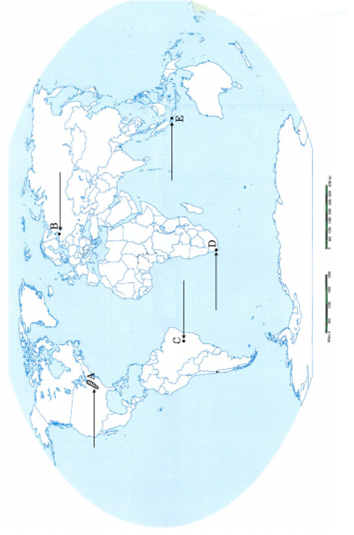 Short Answer Type
Short Answer Type‘‘The concept of development cannot be restricted to the economic sphere alone.’’ What values can convert this concept of development into sustainable development? Explain.
 Long Answer Type
Long Answer TypeName the shipping canal that connects Mediterranean Sea and Red Sea. Describe its any four features.
Distinguish between ports and harbours. Why are sea ports known as gateways of international trade? Explain.
In the given political outline map of the World, five features have been shown by A, B, C, D and E. Identify these features with the help of the information given below and write their correct names on the lines drawn near them:
A. An industrial region
B. A terminal station of railway
C. A major airport
D. A major sea port
E. A mega city
‘‘An important aspect of population growth in India is the growth of its adolescents.’’ Support this statement with suitable arguments.
The arguments:
(i) At present, the share of adolescents i.e., up to the age group of 10-19 years is about 20.9 per cent (2011).
(ii) Among which male adolescents constitute 52.7 per cent and female adolescents constitute 47.3 per cent.
(iii) The adolescent population, though, regarded as the youthful population having high potentials.
(iv) But at the same time they are quite vulnerable if not guided and channelised properly.
(v) There are many challenges for the society as far as these adolescents are concerned, some of which are lower age at marriage, illiteracy – particularly female illiteracy, school dropouts, low intake of nutrients, high rate of maternal mortality of adolescent mothers, high rates of HIV/AIDS infections, physical and mental disability or retardedness, drug abuse and alcoholism, juvenile delinquency and commitence of crimes, etc.
